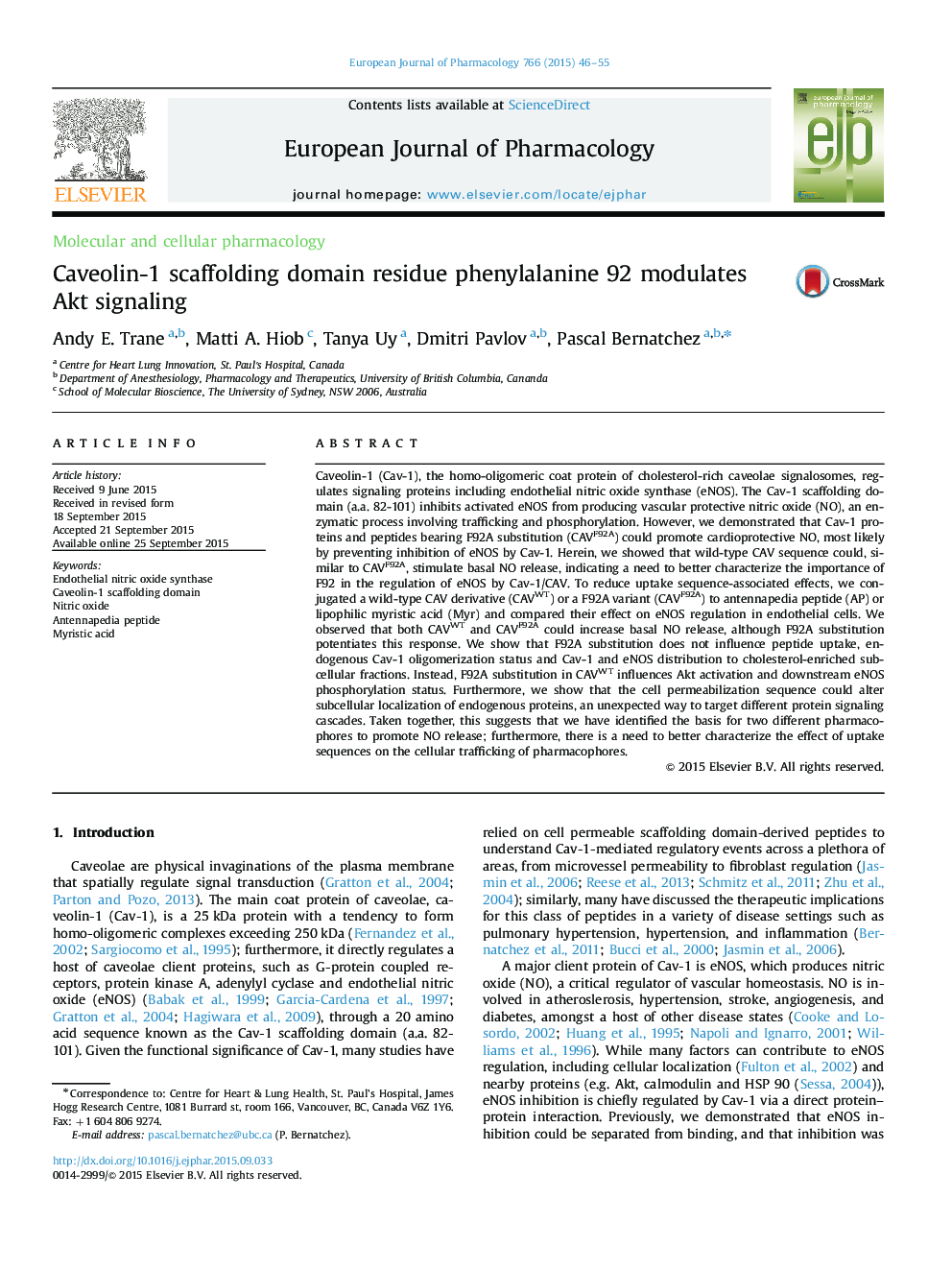| Article ID | Journal | Published Year | Pages | File Type |
|---|---|---|---|---|
| 2531211 | European Journal of Pharmacology | 2015 | 10 Pages |
Caveolin-1 (Cav-1), the homo-oligomeric coat protein of cholesterol-rich caveolae signalosomes, regulates signaling proteins including endothelial nitric oxide synthase (eNOS). The Cav-1 scaffolding domain (a.a. 82-101) inhibits activated eNOS from producing vascular protective nitric oxide (NO), an enzymatic process involving trafficking and phosphorylation. However, we demonstrated that Cav-1 proteins and peptides bearing F92A substitution (CAVF92A) could promote cardioprotective NO, most likely by preventing inhibition of eNOS by Cav-1. Herein, we showed that wild-type CAV sequence could, similar to CAVF92A, stimulate basal NO release, indicating a need to better characterize the importance of F92 in the regulation of eNOS by Cav-1/CAV. To reduce uptake sequence-associated effects, we conjugated a wild-type CAV derivative (CAVWT) or a F92A variant (CAVF92A) to antennapedia peptide (AP) or lipophilic myristic acid (Myr) and compared their effect on eNOS regulation in endothelial cells. We observed that both CAVWT and CAVF92A could increase basal NO release, although F92A substitution potentiates this response. We show that F92A substitution does not influence peptide uptake, endogenous Cav-1 oligomerization status and Cav-1 and eNOS distribution to cholesterol-enriched subcellular fractions. Instead, F92A substitution in CAVWT influences Akt activation and downstream eNOS phosphorylation status. Furthermore, we show that the cell permeabilization sequence could alter subcellular localization of endogenous proteins, an unexpected way to target different protein signaling cascades. Taken together, this suggests that we have identified the basis for two different pharmacophores to promote NO release; furthermore, there is a need to better characterize the effect of uptake sequences on the cellular trafficking of pharmacophores.
